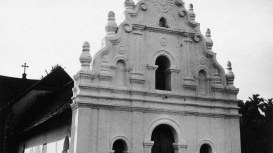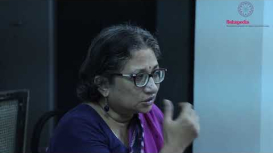The module examines the multiple historical and geographical factors that influenced the unique architecture of the St. Thomas churches of Kerala. Owing its origins to the missionary work of St. Thomas, one of the apostles of Jesus, the community of Christians in Kerala , practised an indigenous form of Christianity engendered by the ecology of the region. The architecture of their churches featured Christian imagery and symbolism, expressed with indigenous materials and styles. Their liturgical language was Syriac, that of the Church of the East, from which they drew their spiritual guidance. The arrival of the Portugese colonialists in Kerala at the end of the 15th century saw an influx of Roman Catholicism in the region which was accordingly reflected in the liturgy and architecture.

Barnett Varghese
A Master of Art History and Aesthetics from M.S. University Baroda, Barnett currently works as a Research Assistant for the Centre for Art & Archaeology, American Institute of Indian Studies.






